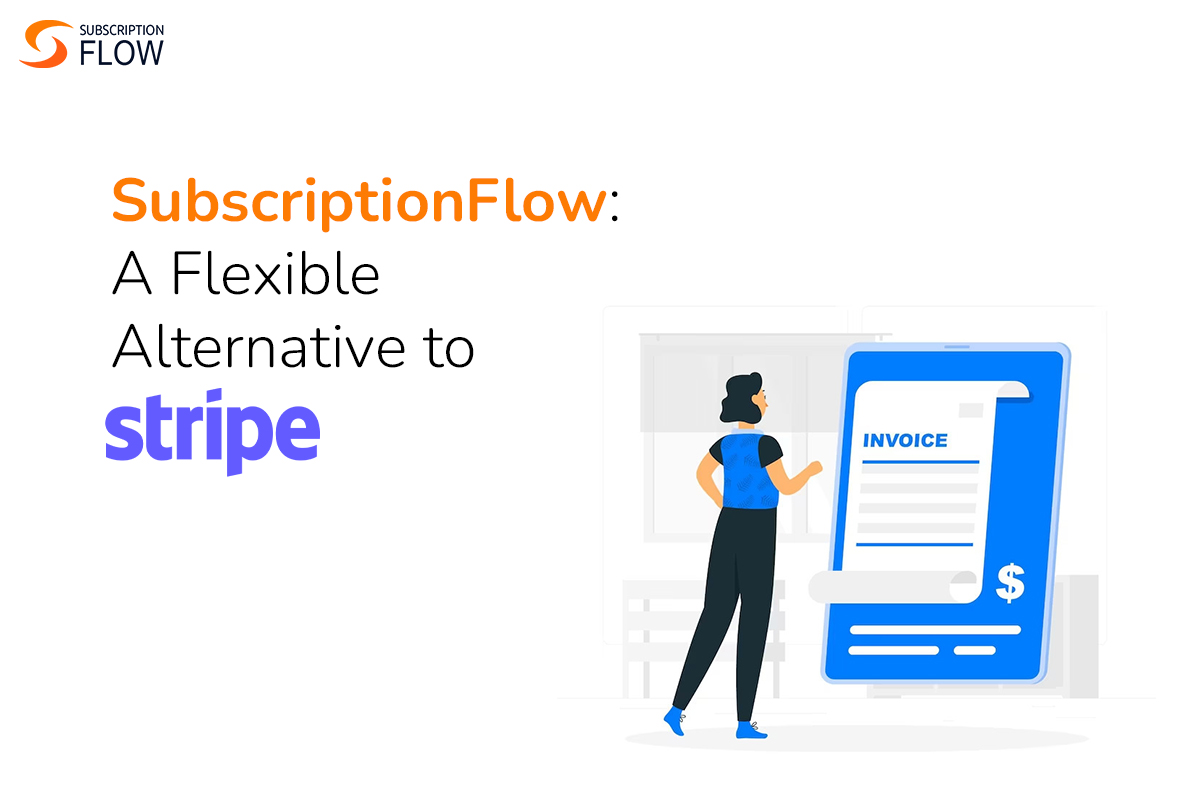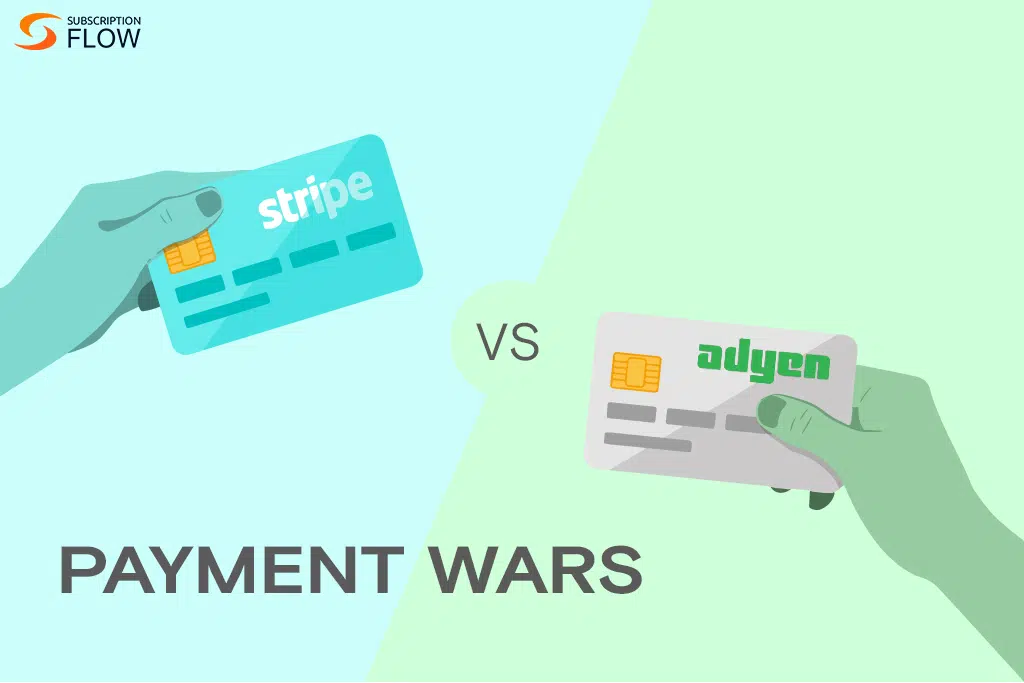
SubscriptionFlow: A Flexible Alternative to Stripe
In today’s flourishing subscription economy, businesses increasingly rely on dedicated subscription management, billing, and invoicing systems to effectively manage their recurring payments.
Stripe is a giant in the payment management category, second only to PayPal, with a market share of 19.44% in 2023. But when it comes to holistically managing your subscription billing cycles, there are some viable alternative routes available to businesses.
There can be many reasons why choosing Stripe directly may not be the best option for your business. In this article, we’ll explore the SubscriptionFlow route, and how it offers businesses a much better value for money.
SubscriptionFlow enables you to power payments through Stripe, as well as countless other top payment gateways while giving you access to a comprehensive suite of subscription management tools that go beyond payment processing. This makes it a flexible, versatile, and affordable alternative for start-ups and SMEs experiencing growth spurts.
The Benefits of Taking the SubscriptionFlow Route
The following are some of the benefits of utilizing SubscriptionFlow instead of managing payments through Stripe alone.
Let’s dive in!
1. Flexibility in Payment Gateway Integration
One of the significant limitations of Stripe’s billing and invoicing functionality is its restriction to Stripe Payments.
While Stripe does support integrations with other payment gateways through its Connect platform, its billing features are not directly compatible with payment gateways outside of the Stripe ecosystem. This means that if you wish to manage your subscriptions through Stripe you will likely need to use the Stripe payment gateway.
On the other hand, SubscriptionFlow imposes no such system constraints. The billing, invoicing, prorations, taxes, etc. functionality works seamlessly with whichever payment gateway you choose to integrate with.
2. Simple Pricing Structure
Stripe is undoubtedly robust with its payments, but it comes with complex pricing and charges tend to pile on. Stripe payments include 3D secure authentication, card account updater, and network token services.
However, accessing billing, invoicing, taxation, and revenue management features each has its own associated costs which add up to a lot, especially for high transactional volumes. This is particularly problematic for fast-growing start-ups and SMEs.
SubscriptionFlow comes with a flat fee based on your yearly revenue, with no hidden or overage charges. All plans give you access to all features which means you can access subscription management, billing, invoicing, proration, revenue management, and reporting features all while powering payments through Stripe or any other payment gateway.
3. Highly Customizable Invoicing
While Stripe allows you basic customization of invoices, such as adding your company logo and adjusting some layout settings, it may lack advanced customization options. If you require highly customized invoice templates, you may find the customization capabilities of Stripe to be limited.
On the other hand, SubscriptionFlow offers comprehensive invoicing features that go beyond Stripe’s basic invoicing capabilities. You can create customized invoice templates, add your branding elements, and incorporate detailed line items to provide a professional and personalized experience for your customers.
4. Dedicated Onboarding Care
Stripe is a highly developer-friendly platform but might be complicated for non-developer demographics. Despite the availability of extensive documentation, a small business owner may find him/herself overwhelmed by the system’s complexity.
Each of SubscriptionFlow’s plans comes with free onboarding hours where you can customize and set up your product/s and pricing plans, tailor invoices and customer self-service portals, etc. with dedicated customer success representatives. This is great for non-technical users who prefer the added technical support.
5. More Affordable
SubscriptionFlow offers a lot of the same features as Stripe billing at a much better price. During the early stages, SMEs struggle with budget constraints making price points an important thing to consider in deciding which route should be taken to manage subscription payments.
Stripe billing offers two plans for recurring payments: Starter and Scale, priced at 0.5% and 0.8% respectively. The starter pack does not include one-time invoicing, invoice reconciliation, payment retries, quote management, and revenue recognition features. SubscriptionFlow offers all these and more within its flat fee.
Similarly, it has two invoicing plans: Starter and Plus, priced at 0.4% and 0.5% per paid invoice. The Starter plan does not equip you with collection features, auto-reconciliation of invoices, and quote management tools all of which can be accessed from any of SubscriptionFlow’s plans.
This means you get more, for much less!
Conclusion
While Stripe is widely known to power recurring payments, SubscriptionFlow is an excellent alternative route to comprehensively manage recurring payments at a much better price point.
Taking the SubscriptionFlow approach, allows start-ups and SMEs to integrate with multiple payment gateways, create highly customizable invoices, provide simple and straightforward pricing and offer comprehensive tools at a flat fee.
Rapidly growing businesses need dedicated software for their billing and invoicing needs as they scale. As you evaluate which route serves you best, consider the benefits of SubscriptionFlow and how it might align with your business requirements for scalability, customization, and affordability. Book a demo with us to learn more!









